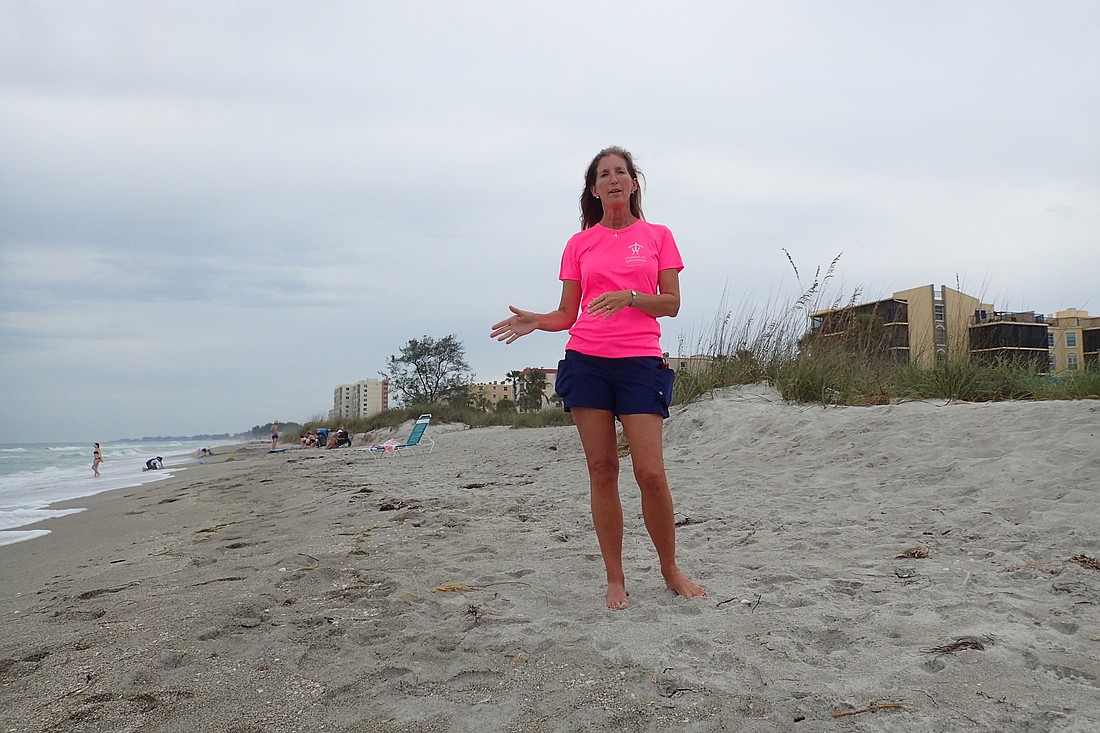- April 4, 2025
-
-
Loading

Loading

The town’s turtle-nesting ordinance hasn’t been updated in approximately 20 years. It doesn’t address certain types of lighting, methods to detect violations or provide ways to enforce other obstructions on the beach that could interfere with nesting.
Perhaps most notorious among the current code’s provisions is a requirement that for lighting to be considered a violation, it must cast a shadow on a moonless, cloudless night — which essentially restricts enforcement to one night a month.
These are a few of the reasons Christopher Elbon, the town’s code enforcement officer, presented commissioners with an overview for a draft ordinance that would increase protection for nesting sea turtles on the Key at the March 23 regular workshop.
But commissioners declined to move forward with drafting a stricter ordinance, instead asking town staff for additional information about nesting and other communities’ regulations.
Elbon explained that other counties and cities have created regulations that mirror a state statute designed to guide local governments in regulating interior and exterior lighting that can disorient hatchlings, or draw them toward light and away from the water.
Longboat Key’s disorientation rates compared to other municipalities locally and statewide are relatively high, according to data from Mote Marine Laboratory & Aquarium. (See chart, right.)
Approximately 15% of nests on Longboat in 2015 showed signs of disorientation. By comparison, Anna Maria’s disorientation rate was 7.3% in 2015 and 6.5% the year before, said Tanya Long, Florida Fish & Wildlife Conservation Commission biologist.
Cyndi Seamon, Longboat Key Turtle Watch volunteer, believes Longboat Key’s relatively high number of disorientations is at least partially the result of the town’s current code.
Long explained to the commissioners why reducing disorientation rates is so important: “Ten feet (the distance a turtle must wander to be recorded as a disorientation) doesn’t sound far, but when you consider the size of the hatchling it’s quite a long distance. If they do make it to the water they have a reduced amount of energy and become easy prey.”
“I hope they accept the changes to the ordinance so we can improve those disorientation rates,” Seamon said. “They’re pretty shameful.”
FWC had encouraged Longboat Key to make changes to its ordinances upon granting recent beach renourishment permits.
The current code does not address light that doesn’t shine directly on the beach or cast a shadow, interior lighting or many types of exterior illumination. It also doesn’t restrict behaviors such as leaving beach chairs or debris on the beach, which can trap adult turtles.
Commissioner Phill Younger asked for a spreadsheet of nearby ordinances to avoid writing new ones that are too restrictive.
“I think we need to change some of our ordinances, but I have concerns about whether ordinances have become unduly unfair to residents,” he said. “If (ordinances) are too stringent, people will lose value in their properties.”